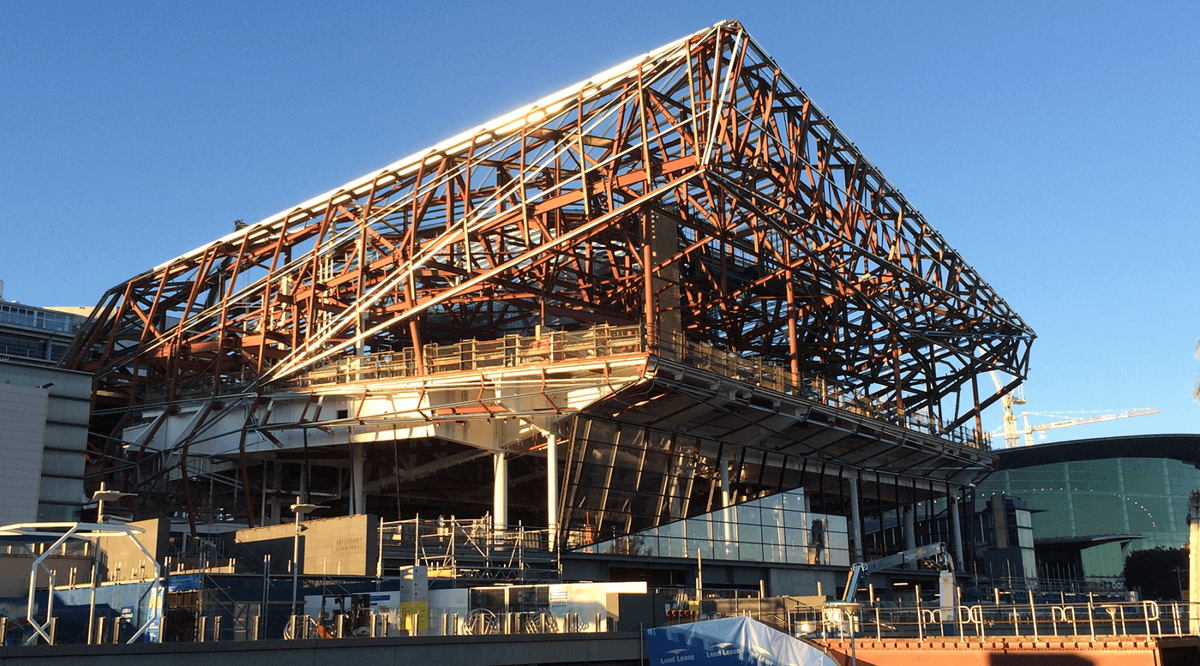

Fabrication is the process used to manufacture steelwork components that will, when assembled and joined, form a complete frame or structure.
The frame generally uses readily available standard sections that are purchased from the steel manufacturer or steel distributor, together with such items as protective coatings and bolts from other specialist suppliers.
Although a wide range of section shapes and sizes are produced, the designer may find that the required section size is not available. In this case, built-up plate girders may be fabricated from steel plate. Sections and plate girders may also be strengthened by stiffening the web or flanges depending upon the load to be carried.
Most modern steelwork fabrication shops have computer-aided design and detailing (CAD), which is linked directly to factory floor computer numerically controlled (CNC) machinery, creating a genuine seamless CAD/CAM environment. The accuracy of the computer-generated details being transmitted directly to the CNC machinery increases the quality standards of production.
.jpg?variant=HalfWidth)
Steel fabrication technology is continually advancing with developments occurring across various fabrication processes. Technologies such as plasma cutting and robotic machinery maximise productivity in the fabrication industry producing parts with accuracy and quality. This is reflected in the speed and accuracy of steel erection on site and results in significant benefits both to the client and main contractor.
Fabrication is an important component of the evolving innovative digital construction process that is currently underway, improving speed, accuracy and safety for the complete supply chain.

The primary processes involved in fabrication include:
The core fabrication processes described above are supported by a number of additional processes used to turn the fabricated component into the final steelwork assembly supplied to the client. These processes include:
Depending on the fabricator and the type of project, these processes may be performed in-house by the fabricator or subcontracted services may be utilised.
Most modern steelwork fabrication shops have computer-aided design and detailing (CAD), which is linked directly to shop-floor-computer numerically controlled (CNC) machinery. The extent of shop automation via CNC machinery varies from shop to shop. The equipment and advantages can include:
ASI fabricator members have additional resources available to them.
Accuracy of steel fabrication